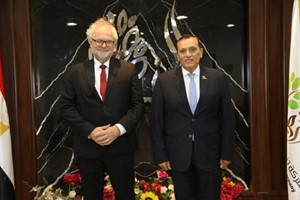Tourism professionals across the Middle East are furthering their efforts to increase their share of the USD168 billion global outbound Chinese tourism market, through a number of travel incentives. With 120 million outbound travelers in 2016 alone, China has retained its position as the world's largest outbound tourism market for the past four years, according to data released ahead of ATM. Simon Press, Senior Exhibition Director, ATM, said: "It's crucial that tourist hubs throughout the Middle East maximize their reach into mega-markets such as China. Demand cycles, budget trends, tech-savvy hotels, food and beverage, sightseeing, culture and heritage centers, can easily be met in many key destinations across the region."
A number of travel incentives introduced into the region over recent months include visas on arrival for Chinese nationals visiting Qatar and the UAE. The private sector is also employing more Cantonese and Mandarin speaking staff to help ease the language barrier and more Chinese businesses are operating their Middle East and Africa operations from the UAE. "With 4,000 mostly Chinese outlets, Dragon Mart retail center in Dubai, is a fine example of this," added Press. Initiatives such as the Qatar China 2016 Year of Culture have also helped boost the profile of Arab states, with arrivals into Doha from Asia and Oceania totaling 342,976 in the first half of last year. "There is every reason to believe that China will maintain its position as a top source market, moving forward. Currently 13 Chinese cities, including Beijing, Guangzhou, Shanghai and Shenzhen, as well as Hong Kong and Taipei, are connected to Dubai with more than 100 weekly flights," said Press.














